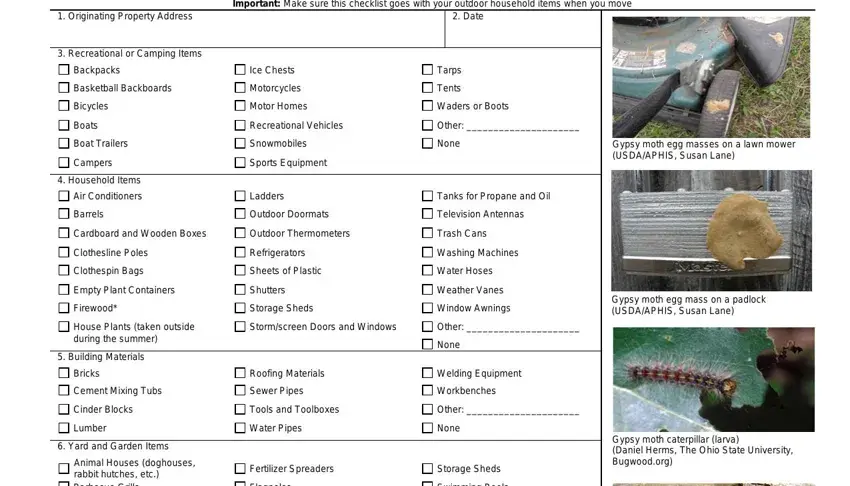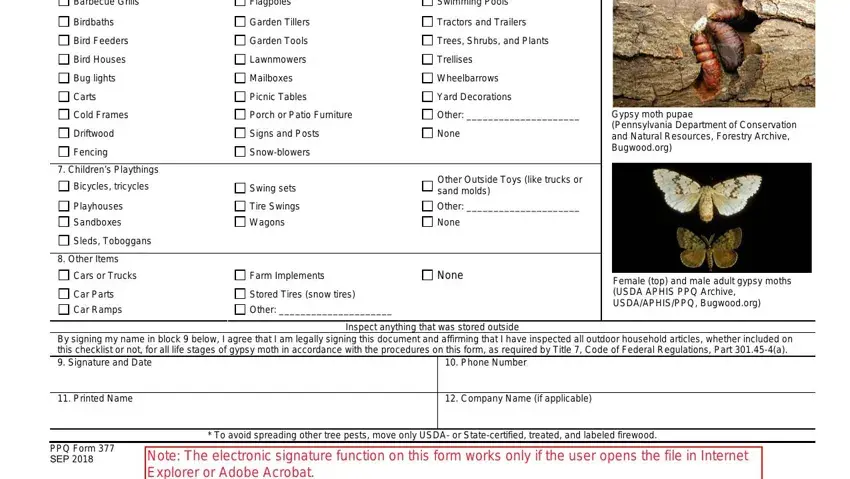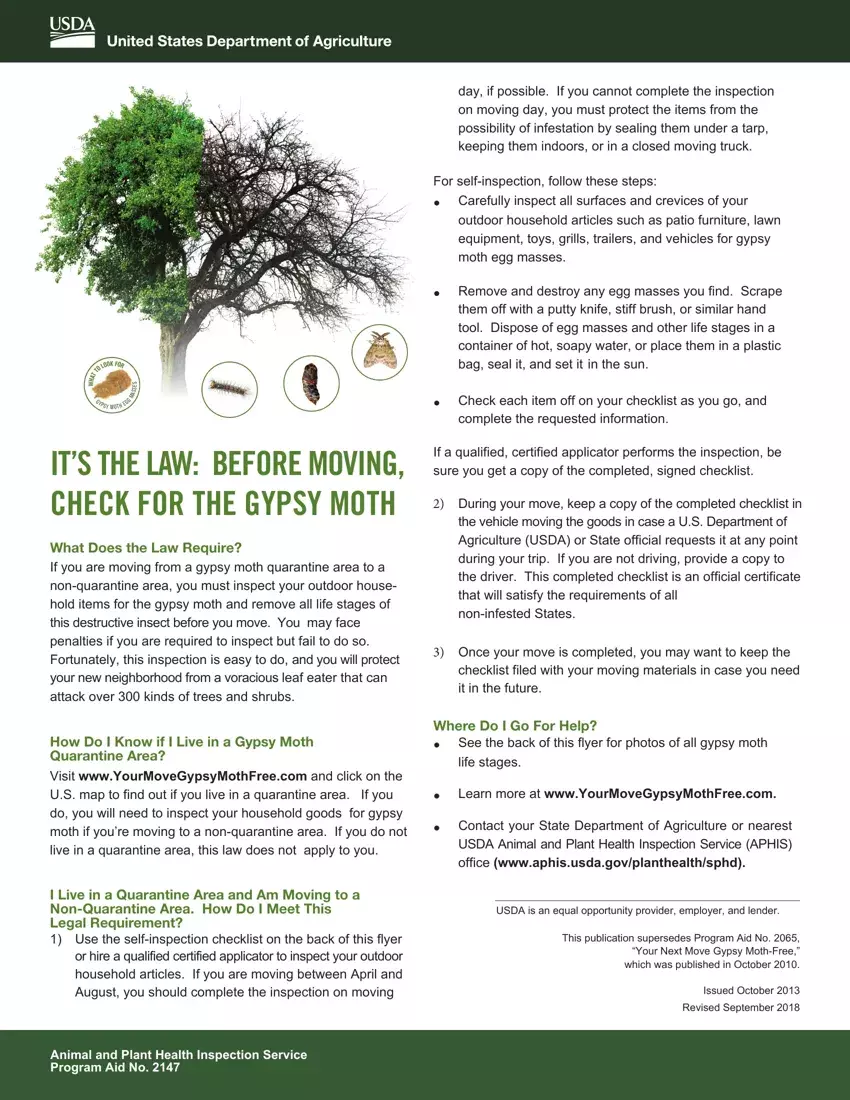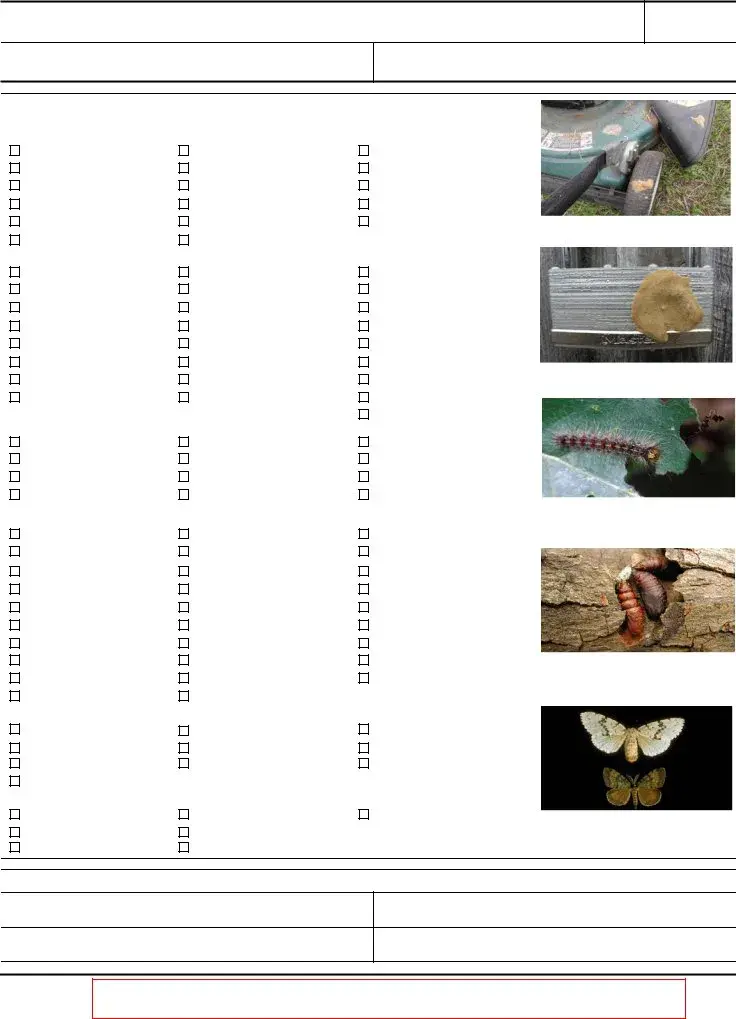|
|
|
OK F |
|
|
|
|
|
LO |
OR |
|
|
|
|
O |
|
|
|
|
|
T |
T |
|
|
|
|
|
|
|
|
|
|
|
|
|
A |
|
|
|
|
|
|
|
H |
|
|
|
|
|
|
S |
W |
|
|
|
|
|
|
E |
|
|
|
|
|
|
|
S |
|
|
|
|
|
|
|
S |
|
|
|
|
|
|
|
A |
|
G |
|
|
|
G |
M |
|
Y |
|
|
G |
|
|
|
P |
E |
|
|
|
|
|
SY MOTH |
|
|
|
IT’S THE LAW: BEFORE MOVING, CHECK FOR THE GYPSY MOTH
What Does the Law Require?
If you are moving from a gypsy moth quarantine area to a non-quarantine area, you must inspect your outdoor house- hold items for the gypsy moth and remove all life stages of this destructive insect before you move. You may face penalties if you are required to inspect but fail to do so. Fortunately, this inspection is easy to do, and you will protect your new neighborhood from a voracious leaf eater that can attack over 300 kinds of trees and shrubs.
How Do I Know if I Live in a Gypsy Moth
Quarantine Area?
Visit www.YourMoveGypsyMothFree.com and click on the U.S. map to find out if you live in a quarantine area. If you do, you will need to inspect your household goods for gypsy moth if you’re moving to a non-quarantine area. If you do not live in a quarantine area, this law does not apply to you.
I Live in a Quarantine Area and Am Moving to a Non-Quarantine Area. How Do I Meet This Legal Requirement?
1)Use the self-inspection checklist on the back of this flyer r hire a qualified certified applicator to inspect your outdoor
household articles. If you are moving between April and August, you should complete the inspection on moving
day, if possible. If you cannot complete the inspection on moving day, you must protect the items from the possibility of infestation by sealing them under a tarp, keeping them indoors, or in a closed moving truck.
For self-inspection, follow these steps:
•Carefully inspect all surfaces and crevices of your outdoor household articles such as patio furniture, lawn equipment, toys, grills, trailers, and vehicles for gypsy moth egg masses.
•Remove and destroy any egg masses you find. Scrape them off with a putty knife, stiff brush, or similar hand tool. Dispose of egg masses and other life stages in a container of hot, soapy water, or place them in a plastic bag, seal it, and set it in the sun.
•Check each item off on your checklist as you go, and complete the requested information.
If a qualified, certified applicator performs the inspection, be sure you get a copy of the completed, signed checklist.
2)During your move, keep a copy of the completed checklist in the vehicle moving the goods in case a U.S. Department of Agriculture (USDA) or State official requests it at any point during your trip. If you are not driving, provide a copy to the driver. This completed checklist is an official certificate that will satisfy the requirements of all
non-infested States.
3)Once your move is completed, you may want to keep the checklist filed with your moving materials in case you need it in the future.
Where Do I Go For Help?
•See the back of this flyer for photos of all gypsy moth life stages.
•Learn more at www.YourMoveGypsyMothFree.com.
•Contact your State Department of Agriculture or nearest USDA Animal and Plant Health Inspection Service (APHIS) office (www.aphis.usda.gov/planthealth/sphd).
USDA is an equal opportunity provider, employer, and lender.
This publication supersedes Program Aid No. 2065, “Your Next Move Gypsy Moth-Free,” which was published in October 2010.
Issued October 2013
Revised September 2018





